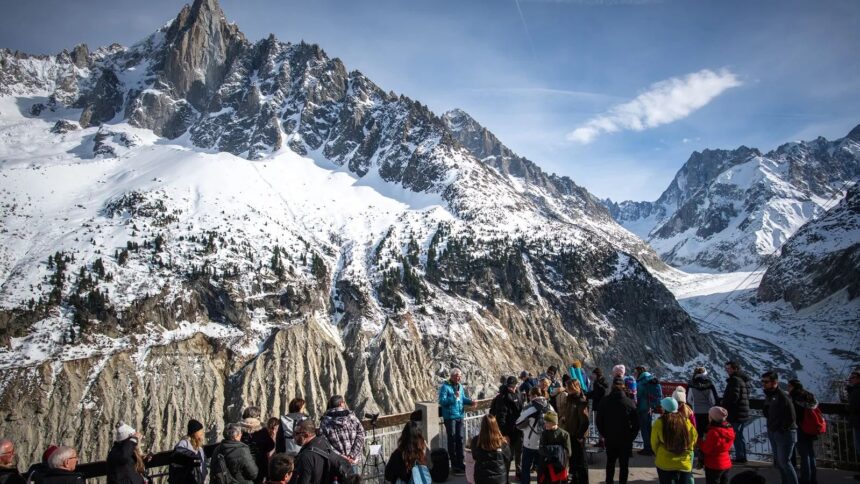If the world gets warmer by 2.7°C due to the current trajectory of climate policies, only 24% of the world’s present-day glaciers will remain, said a new study published in Science signalling that glaciers are more sensitive to global warming than had been previously estimated.
Limiting global temperature rise to 1.5°C — as adopted in the Paris climate agreement — could preserve up to 54% or twice as much glacier mass, the study said.
The study comes just a day after a huge portion of a glacier in the Swiss village of Blatten, in the Alps, collapsed into the valley, burying most of a mountain village in the foothills.
The projected figures in the study were for global scenarios, and skewed by the very large glaciers around Antarctica and Greenland. The study cautioned that even if temperatures stopped rising today, the world’s glaciers would still lose 39% of their mass, compared to 2020 levels, and that would lead to a sea level rise of 113 mm.
Among the most vulnerable regions, as per the study, were glaciers in Scandinavia, Rockies in Western Canada and the US, and European Alps.
In Scandinavia, no glacier ice would be left at 2°C warming while Rockies and European Alps would see only 10-15% glaciers left at the same levels of warming.
Even at a level of 1°C warming, these regions will lose half their ice, the study noted.
“Our study makes it painfully clear that every fraction of a degree matters,” says co-lead author Dr Harry Zekollari from the Vrije Universiteit Brussel.
“The choices we make today will resonate for centuries, determining how much of our glaciers can be preserved,” he said.
“Glaciers are good indicators of climate change because their retreat allows us to see with our own eyes how climate is changing…[but] the situation for glaciers is actually far worse than visible in the mountains today,” says co-lead author Dr Lilian Schuster from the University of Innsbruck.
Though Indian glaciers — particularly those in western South Asia — show a lower projected loss of 5% under current warming, the study underscores that these regions are highly sensitive to additional warming. For every extra 0.1°C increase in global temperatures between 1.5°C and 3°C, glacier loss accelerates rapidly — by about 2% globally, with even steeper losses in Indian sub-regions.
India’s key river basins – Ganga, Indus and Brahmaputra – support millions of livelihoods in north India, north east and the Indo-Gangetic plains. In the Hindu Kush Himalayas, only 25% of ice from 2020 levels will be left at 2°C of warming.
To get these results, a team of 21 scientists from 10 countries used eight glacier models to calculate the potential ice loss of the more than 200,000 glaciers worldwide, under a wide range of global temperature scenarios.
The study used advanced simulations over multi-centennial timescales, revealing that some glacier systems — particularly in the polar regions — might take up to a thousand years to fully respond to today’s climate.
Nikhil joined The Indian Express in 2024. Originally from Mumbai, he has worked in publications such as Tehelka, Hindustan Times, DNA Newspaper, News18 and Indiaspend. In the past 14 years, he has written on a range of subjects such as sports, current affairs, civic issues, city centric environment news, central government policies and politics.








